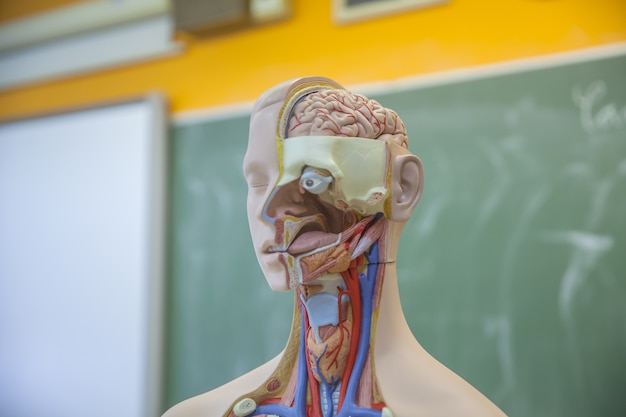Fascinating Facts about the Nervous System

The average adult human brain weighs about 3 pounds.
The nervous system is made up of the brain, spinal cord, and network of nerves.
The nervous system controls everything we do, from breathing to walking and thinking.
Nerve cells in the brain, known as neurons, communicate with each other through electrical signals.
The nervous system can send messages at speeds of up to 268 miles per hour.
The brain can process and transmit information faster than a computer.
It takes only about 150 milliseconds for the brain to process and react to a stimulus.
Neuroplasticity allows the nervous system to change and adapt throughout life.
The human brain contains approximately 100 billion neurons.
Neurons can form new connections and pathways, allowing us to learn and remember.
The brain produces enough electrical voltage to power a low-watt light bulb.
The spinal cord is responsible for transmitting signals between the brain and the rest of the body.
The peripheral nervous system includes all the nerves outside of the brain and spinal cord.
The autonomic nervous system controls involuntary actions such as heart rate and digestion.
The sympathetic nervous system is responsible for the fight-or-flight response.
The parasympathetic nervous system helps to restore the body to a calm and relaxed state.
The brain consumes about 20% of the body’s oxygen and calories.
The nervous system is involved in regulating emotions and mood.
Fascinating Facts about the Nervous System part 2
Damage to the nervous system can result in neurological disorders such as Alzheimer’s or Parkinson’s disease.
The nervous system is responsible for coordinating movements and balance.
The brainstem controls basic life functions such as breathing and heartbeat.
The cerebellum plays a key role in coordinating movement and balance.
The frontal lobe of the brain is responsible for decision-making and problem-solving.
The temporal lobe is involved in processing auditory information and memory.
The parietal lobe is responsible for interpreting sensory information and spatial awareness.
The occipital lobe processes visual information.
The hypothalamus regulates body temperature, hunger, and thirst.
The amygdala is involved in the processing of emotions, especially fear.
The brain releases chemicals called neurotransmitters to communicate between neurons.
The nervous system can be affected by stress and can contribute to various physical and mental health issues.
The nervous system continues to develop and mature throughout childhood and adolescence.
The brain produces its own natural painkillers known as endorphins.
The nervous system helps to regulate sleep patterns and circadian rhythms.
Reflexes are automatic responses controlled by the spinal cord, bypassing the brain for faster reactions.
The myelin sheath helps to insulate and protect nerve fibers, allowing for faster transmission of signals.
The optic nerve is responsible for transmitting visual information from the eyes to the brain.
The nervous system is incredibly complex and still not fully understood by scientists.
Various drugs and substances can affect the functioning of the nervous system.
The central nervous system is protected by the skull and spinal column.
The enteric nervous system, also known as the second brain, controls digestion.
The nervous system communicates with the immune system to help protect the body from diseases.
The nervous system plays a role in regulating blood pressure and heart rate.
The sense of touch is made possible by sensory receptors found throughout the nervous system.
The nervous system can exhibit plasticity and reorganize itself after injury or trauma.
Understanding the workings of the nervous system is crucial for advancements in neuroscience and medical treatments.

